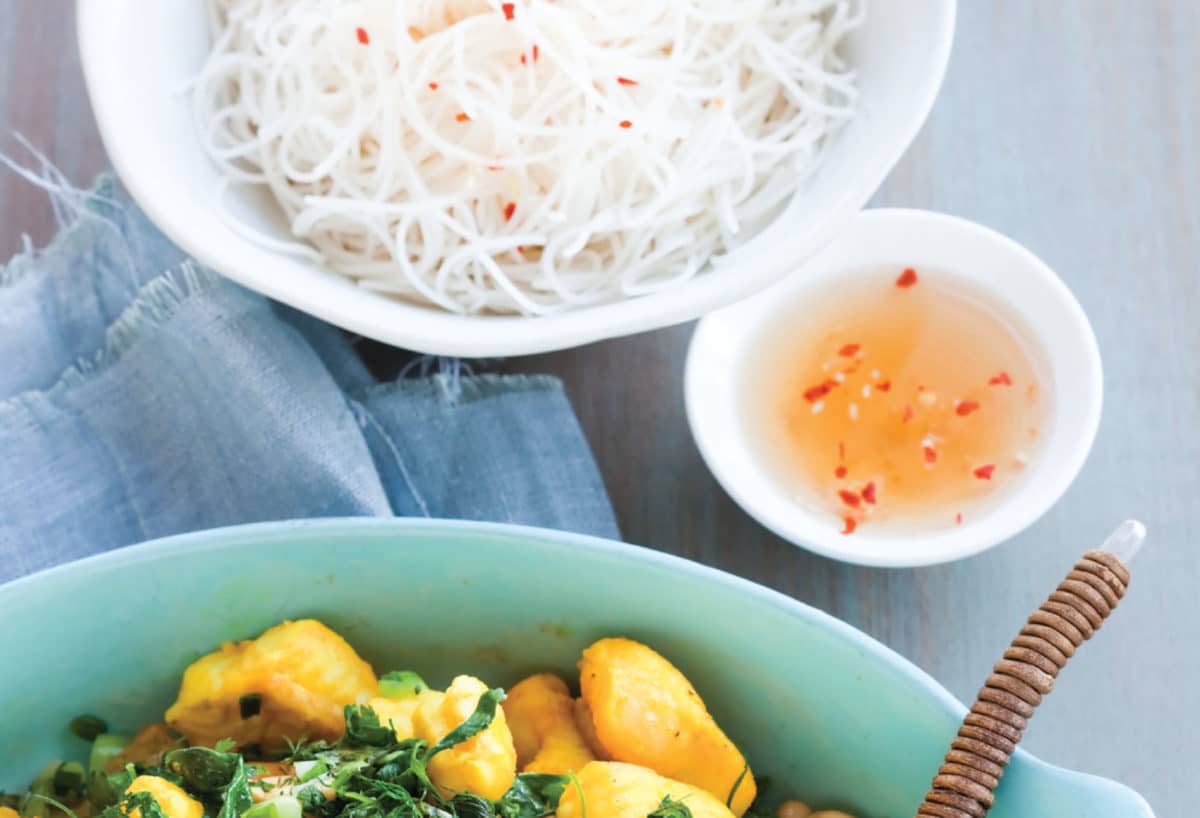As an intrepid eater and long-time food writer, I was caught off guard when I had to stop eating gluten for medical reasons. After a previously problem-free lifetime of enjoying gluten, eight years ago I developed unpleasant symptoms when I ate wheat, barley, or rye. Gone were croissant-filled breakfasts and perfectly twirled mounds of spaghetti carbonara. In order to reclaim my health, my wheat-heavy diet needed major retooling. “Just eat Asian food,” my friends recommended, “there’s hardly any gluten.”
But when you first start thinking about your favorite Asian foods — glorious scallion pancakes or Chinese soup dumplings, a perfect bowl of Japanese ramen, crisp battered tempera — the dangers are apparent. But noodles, dumplings, and batters are just the tip of the iceberg. It’s the omnipresent sauces, quietly painting each bite with gluten, that are harder to avoid. Soy sauce, made from equal parts soybeans and wheat, is exceedingly common in Asian cooking. And how about soy-sauce derivatives like teriyaki, kecap manis, or peanut sauce? Hoisin sauce and oyster sauce are routinely thickened with wheat flour. Gochujang? Maggi seasoning? Many types of fermented bean sauce? You got it: all gluten bombs. For those on gluten-free diets, restaurants, especially those with traditional kitchens, can be a health hazard.
Like most cooks, I have a deep emotional connection to food. Being thrust into a gluten-free world rocked my very foundation. Food — my career, my hobby, and my primary source of enjoyment — turned into a source of danger and frustration. And that’s something I couldn’t swallow. So I did what a cook does best, I rolled up my sleeves and headed for the kitchen.
The initial sadness I felt over losing gluten was eventually trumped by my delight in knowing how to cook without it. Cooking was not just useful, but the critical factor in recapturing life as I had known it. I started traveling the world from my kitchen, researching the cuisines of Japan, China, Korea, Thailand, and Vietnam. I studied ingredients and techniques, noting the ways I might bypass the gluten, and made some interesting discoveries along the way.
Some cuisines, specifically those from Southeast Asian countries, were a little easier to manage. Since Thai and Vietnamese foods largely incorporate fish sauce rather than soy sauce, many traditional dishes are gluten-free by nature.* I found fascinating dumplings, rarely served in U.S. restaurants, like sakoo sai moo made from tapioca pearls and the addictively chewy banh bot loc. Fried treats like banana-and-coconut fritters were cloaked in delicate rice flour batter, curries thickened by good old-fashioned simmering instead of roux. Pork-and-shrimp stuffed sizzling rice crepes captured the attention of my unsuspecting children. Once again, great food started emerging from my kitchen.
As I headed north in my virtual travels to Japan, Korea, and China, I found myself tweaking more of the recipes to get the right results. Wheat-free tamari, an ingredient that’s much more commonplace now than it was 8 years ago, was a godsend. High-quality tamari, brewed from just soybeans, water, and salt, actually tastes great and makes a stellar stand-in for Chinese soy sauce. I made homemade teriyaki and peanut sauces from the tamari, and created hacks like makeshift gochujang from combining miso, mirin, and Korean chiles. Potato starch coats my Japanese fried chicken, rice flour and cornstarch make a mean tempura. Slowly, I learned to recreate the foods I was missing.
With the passage of time, my kitchen escapades have become easier to navigate. The local supermarket carries rice paper and tamari, wine stores stock a wide selection of sake. I even wrote a book to share my discoveries with others in the same situation. More and more companies are creating wheat-free versions of classic Asian sauces, and are expanding my world in the process. With gluten-free hoisin sauce or Korean gochujang I get to enjoy something fantastic that would otherwise be notably absent from my life.
Although restaurant dining remains challenging (gluten-free sauces are often too cost-prohibitive or hard to come by in large quantities for restaurants to use) things are looking up. By traveling across Asia, right from my home kitchen, I’ve made it back to my happy place — a spot at a food-filled table, sharing a meal with favorite friends. ![]()
* Sufferers of Celiac disease beware: Thai and Vietnamese cuisines do still use other gluten-containing sauces, such as yellow bean sauce, hoisin, oyster, and Maggi seasoning.
